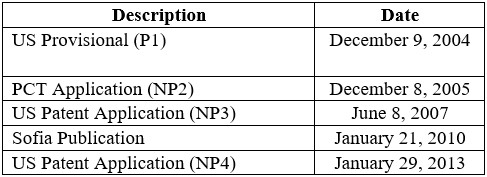The US Court of Appeals for the Federal Circuit affirmed the district court’s finding under the Administrative Procedure Act (APA) that the substance of the US Patent & Trademark Office (PTO) Director’s instructions is unreviewable but reversed the finding that the cloak of unreviewability extended to the procedure used in issuing the instructions. Apple v. Vidal, Case No. 22-1249 (Fed. Cir. Mar. 13, 2023) (Lourie, Taranto, Stoll, JJ.)
The creation of the inter partes review (IPR) program opened new avenues for reviewing the validity of patents following issuance. Since the program’s inception, Congress has recognized that there is a possibility of parallel proceedings at the Patent Trial & Appeal Board and in the district court, that such proceedings could result in conflicting decisions and reduced efficiency in the system. However, Congress left it to the discretion of the two branches to work out such situations among themselves.
As one lever to overcome these issues, Congress provided the Director with unreviewable discretion in deciding whether to institute an IPR. Recently, the Director attempted to leverage this power to increase efficiencies and reduce gamesmanship by instructing the Board on what to consider when instituting an IPR.
Apple and four other companies challenged these instructions in the district court. Apple argued that the Director’s instructions violated the APA by being contrary to the IPR provisions, arbitrary and capricious, and issued without the notice-and-comment rulemaking required under the APA.
Following a motion to dismiss, the district court concluded that Apple’s challenges were directed at the Director’s actions, making them unreviewable by the court. Apple appealed.
On appeal, the Federal Circuit considered all three of Apple’s APA challenges to the instructions, along with whether Apple had standing to bring the suit. The Court agreed with the district court that the question of whether an instruction violates the APA by being contrary to the IPR provisions or by being arbitrary and capricious is directed to the substance of the Director’s action and is not reviewable: “§ 314(a) invests the Director with discretion on the question whether to institute review . . . : The determination by the Director whether to institute an inter partes review . . . shall be final and nonappealable.” As the Federal Circuit noted, this conclusion rests on the well-supported need for the PTO Director to give guidance to delegatees on how to make institution determinations.
The Federal Circuit disagreed that the announcement procedure the Director used for issuing the instructions to the Board was unreviewable, however. As the Court noted, the procedure employed by an agency to announce guidelines is “quite apart” from the substance of those guidelines. Given this distinction, the Court concluded that the procedure the Director used to announce the instructions was reviewable: “The government here has not shown that anything in § 314(d) or elsewhere in the IPR statute supplies clear and convincing evidence that there was to be no judicial review of the choice of announcement procedure, a matter for which generally applicable standards exist.”
The [...]
Continue Reading
read more


 Subscribe
Subscribe



